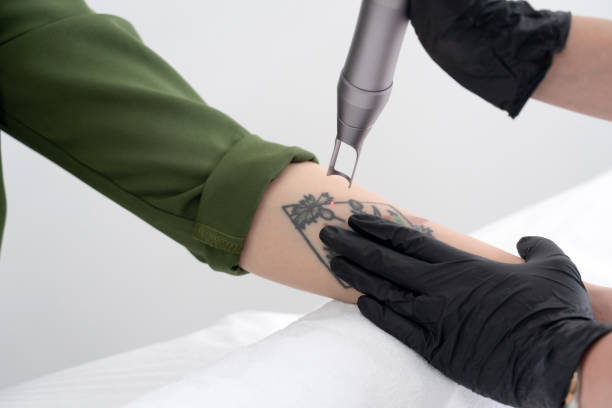Laser tattoo removal in Abu Dhabi is generally considered a safe and effective procedure when performed by qualified healthcare professionals using appropriate equipment and techniques. However, like any medical procedure, there are certain safety considerations to keep in mind to minimize the risk of complications and ensure optimal outcomes. Here are some important safety considerations for laser tattoo removal procedures:
1. Provider Qualifications and Training
Ensure that the healthcare provider performing your laser tattoo removal procedure is qualified, trained, and experienced in cosmetic laser procedures. Look for providers who have undergone specialized training in laser technology and have a thorough understanding of skin anatomy, laser physics, and safety protocols.
2. Assessment of Skin Type and Tattoo Characteristics
Before undergoing laser tattoo removal, your provider should conduct a comprehensive assessment of your skin type, tattoo characteristics, and medical history. This assessment helps determine the most appropriate laser settings, treatment plan, and potential risks or contraindications based on your individual factors.
3. Proper Laser Selection and Calibration
Choose a clinic equipped with state-of-the-art laser technology specifically designed for tattoo removal, such as Q-switched lasers. Ensure that the laser device is properly calibrated and adjusted according to your skin type, tattoo color, and depth to deliver safe and effective treatment while minimizing the risk of adverse effects.
4. Protective Eyewear and Skin Cooling
During laser tattoo removal sessions, both the patient and the provider should wear appropriate protective eyewear to shield the eyes from potentially harmful laser light. Additionally, skin cooling devices or topical anesthetics may be used to minimize discomfort and protect the skin's surface during treatment.
5. Skin Preparation and Aftercare
Follow your provider's instructions for skin preparation before laser tattoo removal, which may include avoiding sun exposure, moisturizing the skin, and discontinuing certain medications or skincare products. After treatment, adhere to recommended aftercare practices, such as keeping the treated area clean, applying topical ointments, and avoiding sun exposure to promote optimal healing and minimize the risk of complications.
6. Monitoring and Follow-Up
Your provider should monitor your skin's response to laser tattoo removal during and after each treatment session and make any necessary adjustments to treatment parameters or aftercare instructions. Schedule follow-up appointments as recommended to assess your progress, address any concerns, and ensure that your treatment goals are being met safely and effectively.
7. Potential Side Effects and Complications
While laser tattoo removal is generally safe, it may be associated with temporary side effects such as redness, swelling, blistering, or hyperpigmentation in some cases. Serious complications such as scarring, infection, or changes in skin texture are rare but possible, particularly if proper safety precautions are not followed or if the treatment is administered by an inexperienced provider.
Conclusion
Laser tattoo removal can be a safe and effective solution for eliminating unwanted tattoos when performed by qualified healthcare professionals using appropriate equipment and techniques. By considering these safety considerations and choosing a reputable clinic with experienced providers, you can minimize the risk of complications and achieve satisfactory results from your laser tattoo removal procedure.





Comments